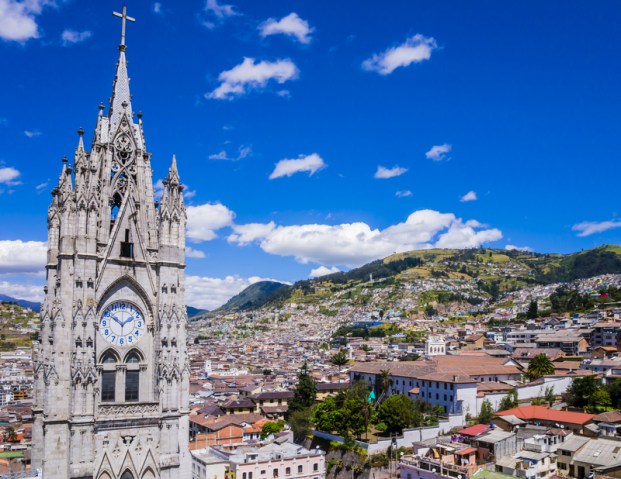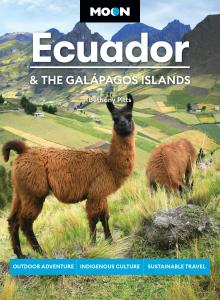A Two-Week Ecoadventure in Ecuador
This two-week itinerary includes some of the country’s best examples of eco- and community-led tourism in the cloud forest, rainforest, and Sierra. You’ll see a side of Ecuador rarely seen by visitors, while directly supporting environmental conservation and the preservation of Indigenous cultures.

Day 1: Quito
Arrive in Quito and spend the day exploring the churches, plazas, and museums of the historical district, before dining at Tandana, a nonprofit ecological restaurant with wonderful views.
Spend a day in Quito
Days 2-3
Option 1: Maquipucuna Reserve & Ecolodge

From Quito, head north to the Maquipucuna Reserve & Ecolodge, the best place in the world to see spectacled bears.
Option 2: Yunguilla
From Quito, head northwest to the cloud forest reserve and community ecotourism project at Yunguilla. Hike ancestral paths or visit the community’s artisanal organic cheese and jam factories.
Days 4-6: Intag

Return to Quito and travel to Intag, where the rugged cloud-forested slopes and crystalline streams host some of the highest biodiversity on the planet. Every visit helps the local people in their struggle against mega-mining.
Hike in the cloud forest at the Bosque Protector El Placer-La Florida, known for its orchids, hummingbirds, and the Andean cock-of-the-rock; or nearby Junín, where a community ecotourism project offers horseback riding and a guided hike to a waterfall.
Visit one of the projects that provide Intag residents with sustainable sources of income, including organic coffee grown in the shade of native trees, artisanal natural toiletry products, and handicrafts made from woven sisal.
Days 7-8: San Clemente
Travel from Intag to San Clemente, a small village just outside Ibarra, where the Vivencia Intercultural Pukyu Pamba community ecotourism project shares the Indigenous Kichwa Caranqui way of life. Hike the path of medicinal plants before helping to harvest and cook a traditional Andean meal straight from the organic gardens.
Days 9-12
From San Clemente, head back to Quito and travel to either Lago Agrio, Shushufindi, or Puyo.
Option 1: Lago Agrio or Shushufindi to Siekoya Remolino
From Quito, travel to Lago Agrio or Shushufindi by bus, then on to Siekoya Remolino, a Siekopai community with an excellent ecotourism project. Spend the next days in the rainforest, hiking, birding, learning about ancestral medicines, and sharing community life.
Option 2: Puyo to Sarayaku

From Quito, take the bus to Puyo and stay overnight at Los Yapas Holistic Center, a permaculture project and eco-lodge.
The following day, travel by canoe or plane to Sarayaku, a Kichwa community known for their defense of the Amazon and Indigenous rights (tour should be booked well in advance). Spend the next days in the rainforest, sharing community life.
Day 13
Return to Quito via Lago Agrio, Shushufindi, or Puyo.
Day 14
Head to the Mindalae Ethnic Museum to learn about Ecuador’s Indigenous cultures and pick up some souvenirs at the attached fair-trade store.
Newsletter Signup
By clicking ‘Sign Up,’ I acknowledge that I have read and agree to Hachette Book Group’s Privacy Policy and Terms of Use
Pin It for Later



